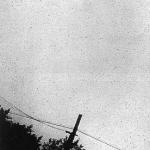Beauty creates love, and love desires consent.
![]() Beauty is the mother of the dialectic: the discussion between students that is the heart of classical education. When we look Godward, we see beauty. This recognition of beauty can occur in a great book that some soul made in God’s image wrote. The beauty found in a poem by Langston Hughes stirs love and love begins a dialog with the poem. Beauty may appear in a film such as the Passion of Joan of Arc when we look into the eyes of Maria Falconetti as she plays the Saint. Beauty certainly appears when we see the stars moved by God’s love in the heavens.
Beauty is the mother of the dialectic: the discussion between students that is the heart of classical education. When we look Godward, we see beauty. This recognition of beauty can occur in a great book that some soul made in God’s image wrote. The beauty found in a poem by Langston Hughes stirs love and love begins a dialog with the poem. Beauty may appear in a film such as the Passion of Joan of Arc when we look into the eyes of Maria Falconetti as she plays the Saint. Beauty certainly appears when we see the stars moved by God’s love in the heavens.
When we see the stars and wonder, consider, and talk to God, then we are beginning to be educated. The deep mistake of the mid-twentieth century was to think that the stars “were ours,” to quote a title from a typical science fiction novel of the period. Men at that time, and some still, see the beauty of the stars and think they can go and own that beauty. They do not see God’s work, but something to possess. This a failure of education, a monstrous metaphysical mistake that undergirds all careless colonization. The beauty of nature, this land, has spawned greed and warfare.
Against this, classical education knows that the Earth is the Lord’s Earth. We might be caretakers carefully conserving the beauty that is there, like Tolkien’s elves in a forest or his dwarves in caves:
‘No, you do not understand,’ said Gimli. ‘No dwarf could be unmoved by such loveliness. None of Durin’s race would mine those caves for stones or ore, not if diamonds and gold could be got there. Do you cut down groves of blossoming trees in the springtime for firewood? We would tend these glades of flowering stone, not quarry them. With cautious skill, tap by tap – a small chip of rock and no more, perhaps, in a whole anxious day – so we could work, and as the years went by, we should open up new ways, and display far chambers that are still dark, glimpsed only as a void beyond fissures in the rock. And lights, Legolas! We should make lights, such lamps as once shone in Khazad-dûm; and when we wished we would drive away the night that has lain there since the hills were made; and when we desired rest, we would let the night return.’[1]
The dwarf Gimli knows how to respond to beauty that is not his own. At most, he might find himself caretaker of the caves. The long dialog of his kind with stone would guide his care for the beauty he found. The dwarves have been educated in conserving, even accentuating, this kind of beauty.
Classical education is an education in handling beauty and cannot be restructured to one period of life or to the formal classroom, God help us. Classical education is not a political movement. Classical education is not the property of “the West.” Classical education is the dialectic that begins in beauty is driven by love Godward. We see beauty, but know beauty is not our own, so we discuss, carefully pause, to see what our relationship to this beauty must be.
The Mother of God is our model.
Consent came after a (brief) dialogue. Mary said, “let it be done unto me.” This was just the start, the beginning of a long labor. When the Baby was born in Bethlehem, the real dialogue began as the Mother of God watched and pondered (Luke 2:19) all the things she saw and was seeing in her heart. She lived with the Lord Jesus as He grew in favor with God and man. She observed, thought, driven from the manger, to the Temple, through His first miracle, to the Cross, and then the upper room in Pentecost.
She became the first student of the Master Teacher: a lifetime relationship that ended in revelation.
[1] Tolkien, J.R.R. The Two Towers: Being the Second Part of The Lord of the Rings (pp. 178-179). Houghton Mifflin Harcourt. Kindle Edition.










